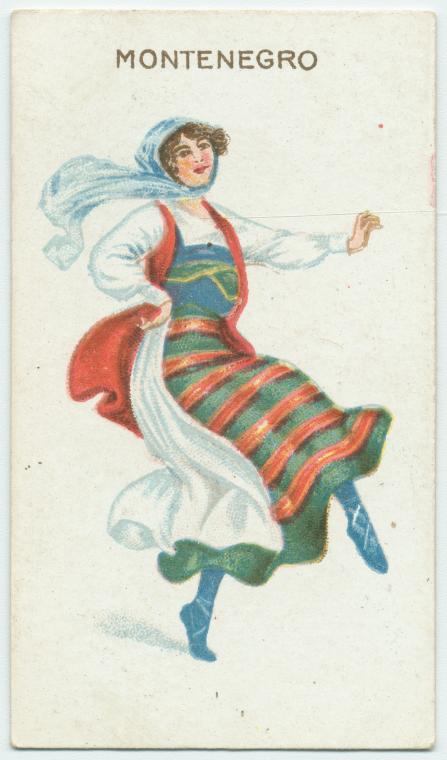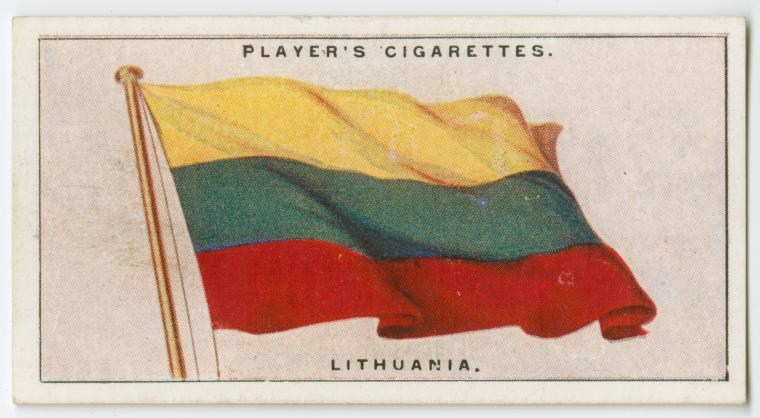Cigarette Cards
Cigarette or tobacco cards began in the mid-19th century as premiums, enclosed in product packaging. They were usually issued in numbered series of twenty-five, fifty, or larger runs to be collected, spurring subsequent purchases of the same brand. Typically, these small cards feature illustrations on one side with related information and advertising text on the other. The height of cigarette card popularity occurred in the early decades of the 20th century when tobacco companies around the world issued card sets in an encyclopedic range of subjects. After a slump during the First World War, popularity resumed, with a new emphasis on film stars, sports, and military topics. Plants, animals, and monuments of the world remained perennially favorite themes. While most cards were produced by conventional offset or other economical commercial printing processes, a few series were issued as original gelatin silver photographs or printed on silk or linen fabric; others were created as puzzles or paper toy cut-outs. The appeal of contemporary cigarette cards fell by the 1950s, ceasing their production and distribution.
The NYPL's collection consists of approximately 100,000 cigarette cards from various countries (49,720 have been digitized). Some of the series includes Slavic and East European motifs, including (but not limited to)
Aeroplane markings: A series of 50 (Lambert & Butler's Cigarettes)
Airplanes: A series of 50 subjects (Gallaher Ltd.)
Arms of Foreign Cities (Wills's Cigarettes)
Dancing Girls: Series of 27 (Scissors Cigarettes)
Flags of the League of Nations: A series of 50 (Player's Cigarettes)
Flags of All Nations series (Sweet Caporal Little Cigars)
Modern school atlas: A series of 96 (Ardath)
Cigarette cards


